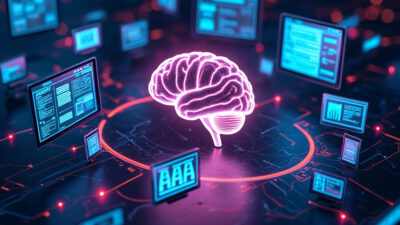Wellness-Oriented Smart Home Technologies
In the era of digital transformation, wellness-oriented smart home technologies are revolutionizing how we live, focusing on health, comfort, and sustainability. These innovations integrate advanced sensors, AI, and IoT to create environments that adapt to our needs, promoting physical and mental well-being. This article explores the cutting-edge technologies shaping our homes into sanctuaries of wellness, offering insights into their benefits and future potential.
The Rise of Smart Home Wellness Technologies
The integration of wellness-oriented smart home technologies marks a significant shift in how modern living spaces are designed, evolving from mere conveniences to essential tools for health and comfort. Initially perceived as luxury gadgets, these technologies have become indispensable as awareness grows about their impact on physical and mental well-being. The rise of chronic health conditions, stress-related ailments, and environmental concerns has accelerated their adoption, transforming homes into proactive health ecosystems.
Early smart home systems focused on basic automation—lighting control, security, and entertainment. However, advancements in IoT, AI, and sensor technologies have enabled a deeper integration of wellness features. For instance, adaptive lighting systems now mimic natural daylight cycles, regulating circadian rhythms and improving sleep quality. Similarly, smart air purifiers and CO2 monitors actively combat indoor pollution, a growing concern linked to respiratory issues and cognitive decline. These innovations reflect a broader trend: homes are no longer passive shelters but dynamic environments that respond to occupants’ physiological needs.
The pandemic further underscored the importance of wellness-centric living. With people spending more time indoors, demand surged for technologies that enhance air quality, reduce stress, and promote activity. Voice-activated assistants now guide meditation sessions, while smart mattresses track sleep patterns and adjust firmness in real time. Even architectural elements, like biophilic design, are being enhanced with smart systems to integrate natural elements into indoor spaces.
What began as niche luxury has become a societal imperative, driven by data proving these technologies’ health benefits. As the next chapter explores, the synergy of key components—from air quality sensors to circadian lighting—creates a holistic wellness infrastructure, redefining the very concept of home.
Key Components of Wellness-Oriented Smart Homes
Wellness-oriented smart homes rely on a suite of interconnected technologies designed to enhance health and comfort by creating an environment that adapts to human needs. Among the most critical components are air quality monitors, which track pollutants like CO2, VOCs, and particulate matter in real time. These devices integrate with ventilation systems to automatically purify the air, reducing allergens and toxins that can impact respiratory health and cognitive function. Advanced models even detect mold spores or radon, providing early warnings for long-term health risks.
Another cornerstone is the smart thermostat, which goes beyond basic temperature control by learning user preferences and adjusting settings for optimal thermal comfort. These systems analyze occupancy patterns, humidity levels, and even weather forecasts to maintain an ideal indoor climate. Some models incorporate biometric feedback, such as heart rate or sleep data, to fine-tune temperatures for better rest or energy efficiency.
Circadian lighting systems play a pivotal role in aligning artificial light with natural biological rhythms. By dynamically adjusting color temperature and intensity throughout the day, these systems promote melatonin production at night and boost alertness during daylight hours. Smart bulbs can sync with sleep trackers or sunrise alarms, gradually brightening to ease wakefulness or dimming to prepare the body for rest.
Additional elements include smart water filters that monitor purity and mineral content, noise-canceling systems that adapt to ambient sound levels, and ergonomic furniture with embedded sensors to correct posture. Together, these technologies form an ecosystem that proactively supports physical and mental well-being, setting the stage for AI-driven personalization discussed in the next chapter.
The Role of AI in Personalizing Wellness
Artificial intelligence (AI) is the cornerstone of personalization in wellness-oriented smart homes, transforming static devices into dynamic systems that adapt to individual needs. By analyzing data from sensors, wearables, and user interactions, AI creates bespoke wellness profiles, ensuring that health and comfort are optimized in real time. For instance, smart thermostats don’t just follow preset schedules—they learn occupancy patterns, preferred temperatures, and even physiological responses to adjust the environment proactively. Similarly, circadian lighting systems use AI to fine-tune light intensity and color temperature based on sleep cycles, activity levels, and even mood indicators gathered from voice assistants or wearable devices.
AI’s ability to process vast datasets enables it to detect subtle trends that humans might overlook. A smart air purifier, for example, can cross-reference pollution levels with allergy symptoms reported via a health app, automatically adjusting filtration when it predicts a potential flare-up. Machine learning algorithms also refine their predictions over time, becoming more attuned to individual preferences and health requirements. This continuous feedback loop ensures that wellness technologies evolve alongside the user’s lifestyle.
Privacy and transparency remain critical in AI-driven wellness systems. While personalization relies on data collection, robust encryption and anonymization techniques safeguard sensitive information. Users retain control, with options to adjust AI responsiveness or opt out of certain tracking features. As IoT connectivity expands (a topic explored in the next chapter), AI’s role will grow even more integral, orchestrating seamless interactions between devices to create a truly intelligent living space that prioritizes well-being at every turn.
IoT and Connectivity in Smart Wellness Homes
The foundation of a wellness-oriented smart home lies in its ability to integrate diverse technologies into a cohesive ecosystem, and IoT (Internet of Things) serves as the backbone of this connectivity. By enabling seamless communication between devices, IoT ensures that wellness technologies—from air purifiers to fitness trackers—work in harmony to enhance health and comfort. Unlike standalone solutions, IoT-driven systems aggregate data from multiple sources, creating a unified understanding of the home environment and its occupants.
For instance, a smart thermostat can collaborate with a sleep tracker to adjust room temperature based on real-time biometric data, while a connected air quality monitor can trigger an air purifier when pollutants exceed safe levels. This interoperability is critical for proactive wellness management, as it allows devices to respond dynamically to changing conditions without manual intervention. Moreover, IoT facilitates remote monitoring, empowering users to track their home’s wellness metrics via smartphones or voice assistants, ensuring they remain informed even when away.
Security and reliability are paramount in IoT-enabled wellness homes. With sensitive health data being exchanged, robust encryption and secure protocols are essential to prevent breaches. Additionally, edge computing—where data is processed locally rather than in the cloud—reduces latency and enhances responsiveness, ensuring that wellness adjustments happen in real time.
As AI personalizes wellness strategies (as discussed earlier), IoT ensures these insights are executed efficiently across devices. Looking ahead, the next chapter explores how smart lighting leverages these interconnected systems to regulate circadian rhythms, further illustrating how IoT transforms isolated gadgets into a synchronized wellness network.
Smart Lighting and Circadian Rhythms
Smart lighting systems represent a critical advancement in wellness-oriented smart home technologies, leveraging IoT connectivity to align artificial light with the body’s natural circadian rhythms. Unlike traditional lighting, which operates on static schedules, these systems dynamically adjust color temperature and intensity throughout the day, mimicking the progression of natural sunlight. By doing so, they help regulate melatonin production, a hormone essential for sleep-wake cycles, thereby improving sleep quality and overall health.
At the core of these systems are tunable LEDs, which shift from cooler, blue-enriched light in the morning to warmer, amber tones in the evening. This transition mirrors the sun’s natural arc, reducing eye strain and minimizing disruptions to the body’s internal clock. Advanced systems integrate with wearables or smartphone apps to personalize lighting based on individual sleep patterns, activity levels, or even local sunrise and sunset data. For instance, if a user’s wearable detects poor sleep, the system can gradually increase morning light exposure to boost alertness.
Beyond sleep, circadian-aligned lighting has been linked to enhanced mood, productivity, and even metabolic health. Studies suggest that improper lighting—especially excessive blue light at night—can contribute to insomnia, depression, and long-term health risks. Smart lighting mitigates these issues by automating optimal conditions without user intervention, seamlessly integrating with other wellness technologies like air quality monitors (discussed in the next chapter) to create a holistic healthy environment.
By bridging IoT-driven automation with biological needs, smart lighting exemplifies how intelligent living spaces can actively support well-being, rather than merely reacting to user commands. This synergy between technology and human physiology underscores the transformative potential of wellness-oriented smart homes.
Air Quality and Health Monitoring
Indoor air quality (IAQ) plays a critical role in overall wellness, influencing respiratory health, cognitive performance, and long-term well-being. Wellness-oriented smart home technologies now integrate advanced sensors and purification systems to monitor and optimize air conditions in real time. These systems detect pollutants such as volatile organic compounds (VOCs), particulate matter (PM2.5/PM10), carbon dioxide (CO2), and humidity levels, providing actionable insights to maintain a healthy living environment.
Air quality monitors equipped with laser-based particle sensors and electrochemical gas detectors offer precise readings, while smart ventilation systems automatically adjust airflow based on pollutant concentrations. For example, high CO2 levels—often linked to drowsiness and reduced cognitive function—trigger increased ventilation or activate air purifiers with HEPA and activated carbon filters. Some systems even integrate with HVAC systems to ensure optimal air exchange without energy waste.
Beyond purification, humidity control is vital for preventing mold growth and maintaining respiratory comfort. Smart humidifiers and dehumidifiers adjust moisture levels dynamically, reducing allergens and improving sleep quality. Additionally, IoT-enabled plants and biofilters leverage natural air-cleaning properties, complementing mechanical solutions for a holistic approach.
Emerging research highlights the cognitive benefits of clean air, with studies showing improved focus and productivity in well-ventilated spaces. By combining real-time monitoring with automated interventions, these technologies create healthier indoor environments, seamlessly aligning with the wellness-focused themes of smart lighting and upcoming hydration systems. The integration of AI further personalizes air quality management, learning occupancy patterns to preemptively address potential issues before they impact health.
Water Purification and Hydration Tracking
Water purification and hydration tracking technologies are transforming how we consume and monitor water, ensuring both quality and optimal intake for better health. Smart water purification systems go beyond traditional filters by integrating sensors and connectivity to provide real-time data on water quality. These systems detect contaminants like heavy metals, chlorine, and bacteria, alerting users via mobile apps when filtration is needed or when water quality drops. Some advanced models even adjust filtration levels automatically based on detected impurities, ensuring consistently safe drinking water.
Hydration tracking complements purification by encouraging healthy water consumption habits. Smart water bottles and faucet attachments use sensors to measure intake, syncing with health apps to provide personalized recommendations. These devices consider factors like activity level, climate, and individual health metrics to calculate daily hydration goals. For example, a smart bottle might remind users to drink more after a workout or during hot weather, while integrated apps track progress over time, offering insights into hydration patterns.
Together, these technologies create a seamless wellness ecosystem within the home. By ensuring clean water and promoting mindful consumption, they address a fundamental aspect of health often overlooked. Unlike air quality monitoring, which focuses on environmental factors, water purification and hydration tracking target personal habits directly linked to digestion, skin health, and energy levels. As the next chapter explores noise reduction, which enhances mental well-being, this chapter highlights how intelligent water systems support physical vitality—completing a holistic approach to wellness-oriented smart living.
Noise Reduction and Acoustic Comfort
Noise pollution is a growing concern in urban environments, disrupting sleep, increasing stress, and impairing cognitive function. Smart home technologies are now addressing this challenge by integrating advanced noise reduction and acoustic comfort solutions, transforming living spaces into sanctuaries of tranquility.
One key innovation is active noise cancellation (ANC) systems, which use microphones and speakers to detect and counteract unwanted sounds in real time. Unlike passive solutions like soundproofing, ANC adapts dynamically, making it ideal for open-concept homes or apartments near busy streets. Paired with AI-driven sound profiling, these systems learn household noise patterns, selectively dampening disruptive frequencies while preserving desirable sounds, such as voices or alarms.
Another breakthrough is the use of smart windows with variable acoustic insulation. These windows adjust their density or employ vibration-dampening materials to block external noise based on real-time environmental data. For instance, during peak traffic hours, the windows automatically thicken, while at night, they prioritize low-frequency noise reduction to enhance sleep quality.
Voice assistants and smart speakers also contribute by leveraging adaptive sound masking. They emit soothing background noise—like white noise or nature sounds—tailored to the user’s preferences and activity. For example, during work hours, the system might play binaural beats to improve focus, while at bedtime, it shifts to calming ocean waves.
Finally, acoustic zoning ensures balanced soundscapes. Smart home hubs use distributed sensors to monitor noise levels room-by-room, adjusting audio outputs accordingly. If a home office requires silence, the system can mute adjacent entertainment zones or activate sound-absorbing panels.
By harmonizing technology with acoustics, these innovations not only mitigate noise pollution but also align with broader wellness goals—complementing the hydration and purification systems discussed earlier while paving the way for energy-efficient, health-centric living spaces.
Energy Efficiency and Sustainable Wellness
Smart home technologies are revolutionizing wellness by integrating energy efficiency with sustainable living, creating environments that benefit both personal health and the planet. By optimizing energy use, these systems reduce environmental impact while fostering healthier indoor spaces—proving that sustainability and well-being are deeply interconnected.
Energy-efficient smart thermostats, for example, go beyond lowering utility bills. They maintain optimal indoor temperatures, reducing stress on the body and improving sleep quality. Advanced models learn user preferences and adjust heating or cooling dynamically, ensuring comfort without wasteful energy consumption. Similarly, smart lighting systems enhance circadian rhythms by mimicking natural daylight patterns, reducing eye strain and boosting mood—all while cutting electricity usage through motion sensors and adaptive brightness.
Air quality is another critical intersection of wellness and sustainability. Smart ventilation systems monitor CO2 levels, humidity, and pollutants, automatically adjusting airflow to maintain a healthy environment. Energy recovery ventilators (ERVs) further improve efficiency by recycling heat or coolness from exhaust air, reducing the need for excessive HVAC use.
Renewable energy integration, such as solar-powered smart homes, minimizes reliance on fossil fuels while ensuring uninterrupted wellness-focused automation. Battery storage systems store excess energy, providing backup during outages and maintaining a stable, health-supportive environment.
Finally, water conservation technologies, like smart irrigation and leak detection, prevent waste while promoting hydration and greenery—key elements of mental and physical well-being. By aligning energy efficiency with wellness, smart homes create a sustainable foundation for healthier living, proving that intelligent design benefits both people and the planet.
The Future of Wellness-Oriented Smart Homes
The future of wellness-oriented smart homes promises transformative advancements, driven by emerging technologies and shifting consumer priorities. As artificial intelligence (AI) and machine learning evolve, smart homes will move beyond reactive systems to predictive and adaptive environments that proactively enhance well-being. Imagine AI-powered systems that analyze sleep patterns, stress levels, and daily routines to adjust lighting, temperature, and even aromatherapy in real time—optimizing mental and physical health without user intervention.
Wearable integration will deepen, with smart homes syncing seamlessly with health trackers and biosensors. These systems could detect early signs of fatigue or illness, triggering interventions like air purification, hydration reminders, or even guided meditation sessions. Biophilic design will also play a larger role, with smart glass windows dynamically adjusting transparency to mimic natural light cycles, while embedded vertical gardens improve air quality and reduce stress.
Emerging innovations like quantum dot sensors could enable ultra-precise air quality monitoring, detecting pollutants at molecular levels and activating filtration systems before occupants notice discomfort. Meanwhile, advances in haptic feedback will allow floors and furniture to subtly adjust posture or provide gentle vibrations to improve circulation, blending wellness into everyday interactions.
The rise of edge computing will ensure these systems operate with near-zero latency, processing data locally for instant responses while maintaining privacy. Future smart homes may even incorporate neuroadaptive interfaces, using non-invasive brainwave monitoring to tailor environments to cognitive states—dimming lights for focus or playing soothing sounds for relaxation.
As sustainability and wellness converge, next-gen smart homes will not just react to needs but anticipate them, creating living spaces that are as nurturing as they are intelligent. The line between home and healthcare will blur, redefining what it means to live well.

Conclusions
Wellness-oriented smart home technologies represent a significant leap forward in creating living spaces that prioritize our health and comfort. By harnessing the power of AI, IoT, and smart design, these innovations offer personalized environments that adapt to our needs. As we look to the future, the potential for these technologies to enhance our quality of life is boundless, marking a new era in intelligent living.



